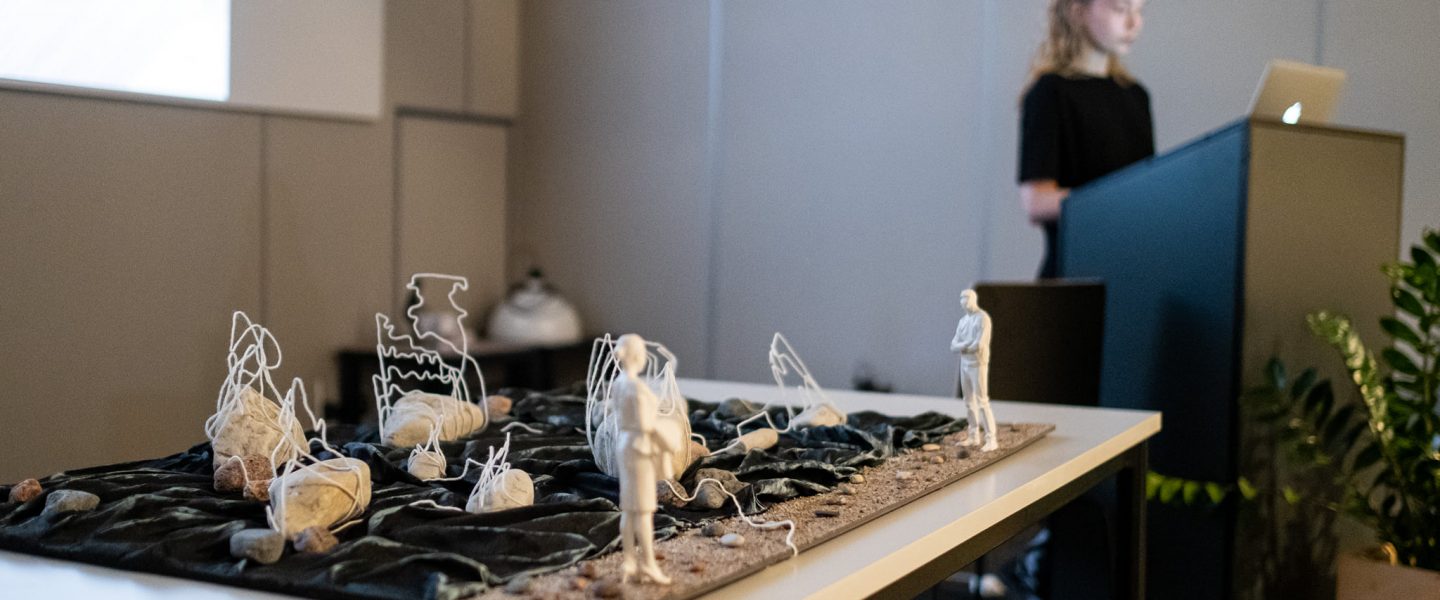
MASTER’S THESES
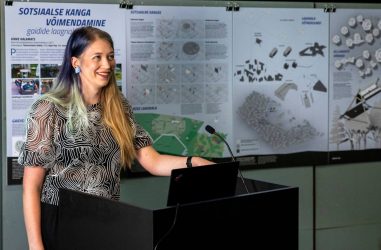
Kirke Kalamats – Amplifying social fabric on the example of a guides’ campsite
A sign of a polarized society is the opposition of people to each other, one of the causes and aggravators of which is the design of social media. Distant human relationships lead to conflicts in the physical world. Bringing society together requires shared experiences, a sense of identification and an environment where you can co-exist. Kirke introduces a guides’ campspace, which is a creator of a strong social fabric, where valuable human relationships can be successfully established. In her work, she tries to find ways to amplify social fabric in the camp environment and offer an unifying experience through space. In the design, she takes a closer look at the places between which the campers move and plan the space, so that the places themselves contribute to the development of valuable human relationships and offer spatial experiences specific to the human dimension.
Supervisors: Tüüne-Kristin Vaikla, PhD; Kaja Pae, MA; Jaan Tiidemann, MA
//
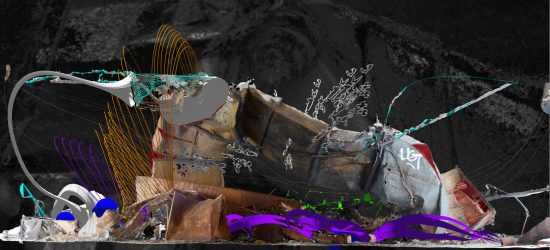
Kaarel Kuusk
Repair as a trace of time: In search of a space that cumulates meaning
The master’s thesis observes, maps and experiments with the expressions of time in space. Attention is paid to the property of space to be in constant change and transformation. Traces of time reflect this change – traces of wear and tear, degradation, repairs, additions, and so on. The thesis among other things, maps time traces, repairs furniture and expresses change in the drawing and experiments with the possibility of change in virtual space.
Supervisors: Tüüne-Kristin Vaikla, PhD; Kaja Pae, MA; Jaan Tiidemann, MA
//
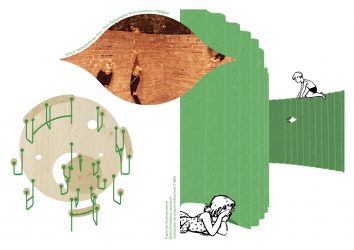
Kaisa Sööt
Playground as a Typology. Search for the Local and Ambiguous Alternative
Thesis grows out of critique towards widely appearing playgrounds, and tries to find an alternative. By building a public play element, collecting archival materials and creating a series of playstructures the thesis tries to find ways to create local and open structures that support play.
Supervisors: Kaja Pae, MA; Tüüne-Kristin Vaikla, PhD; Jaan Tiidemann, MA
//
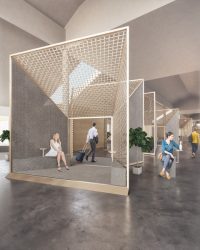
Birgit Õigus – Non-mask journey within a mask-mandatory space. Furniture collection for post-pandemic Tallinn Airport
Thesis “Non-mask journey inside a mask-mandatory space. Furniture collection for post-pandemic Tallinn Airport” is dealing with the research and analysis of changes within nowadays terminal space caused by Covid-19 pandemic. How has Covid-19 affected other airports across the world? Also analysing how this pandemic affected the relation between individualism and collectivism within the society. Topics in the thesis are disserted by the metaphor of journey. Also from the perspective of a person entering the journey, being on a journey and leaving the journey. Study has conducted keeping in mind all the strict rules of physical distance between people. On the other hand – taking into consideration the natural wish of a human being not to be totally isolated from others. Theoretical part of this thesis is to feed the design solution for the final outcome – furniture collection for Tallinn Airport. Design language and materials are evolved to fight against widely spread mindset for using things only once and dumping them afterwards, especially during Covid19-time.
Supervisors: Jüri Kermik, PhD; Gregor Taul, MA; Andrea Tamm, MA
//
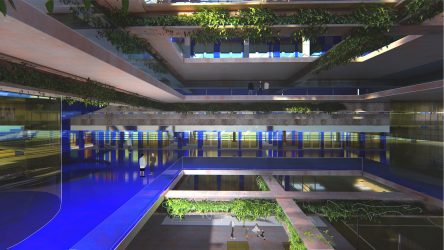
Lilian Männikust
Global village – The path of a climate disaster
What will life be like in 2100? Today it is unpredictable, but every wrong step towards it is changing the future vision more appalling. By 2100, the average near-surface temperature is projected to be at least 1.5° C warmer than at the moment. This means that sea levels have risen by ~ 2 meters, desertification is reaching Central Europe and climate-induced human migration has increased. As a utopian warning project, this work seeks to alleviate the accumulation of unorganized camps, while reusing obsolete forms. In order to create a globally functioning system of refugee camps, the existing network of wide-ranging oil platforms is suitable for their shells. When combining the source of the global issue – oil rig and the one most affected by it – climate refugee, a contrast is formed, that sums up the entire global warming – simultaneous drought and flood.
Supervisors: Tüüne-Kristin Vaikla, PhD; Kaja Pae, MA; Jaan Tiidemann, MA
//
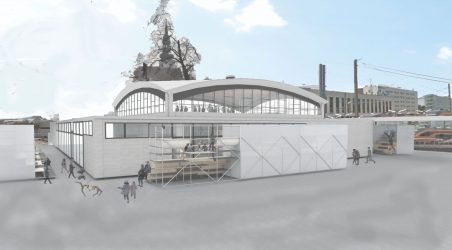
Annika Lindemann
Exploring theatre space for experiences and encounters at the former waiting pavilion of Tallinn Baltic Station
The subject of Annika’s Master’s thesis is to look for a functional space system that would help to open up a specific event to a casual viewer and to a wider audience. The aim is to propose a creative environment and to expand theatre and the rehearsal process into public space. Her proposal is an open performance space in the former passenger waiting area of the Tallinn Baltic Station to which she would add a scaffolding system. This system would become the articulated element for connecting the building and the outside environment, enlivened by random passers-by and staged events. The building would become a shell for experiments performed by six different performing art ensembles during a one year period. The building, the modules and the surrounding environment would be used during the rehearsal process. The modules constitute a framework for different materials and levels, which change according to specific needs and which are also able to tell different stories through different spatial experiences.
Supervisors: Andrea Tamm, MA; Gregor Taul, MA; Jüri Kermik, PhD
//
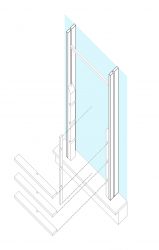
Kaarin Pender
From parasitic spaces to symbiotic grids. Valuing the border areas in interior architecture
This research investigates borders and peripheral areas in interior architecture and tries to give sense and essence to border areas through several case studies with a specific focus on the new building of the Estonian Academy of Arts. In the design part, Kaarin offers several design solutions that act from one side as parasitic interventions but on the other hand as a new symbiotic grid for the building that help to enrich the condition of these areas and to bring out the considerable potential that the peripheral areas have.
Supervisors: Jüri Kermik, PhD; Gregor Taul, MA; Andrea Tamm, MA
//
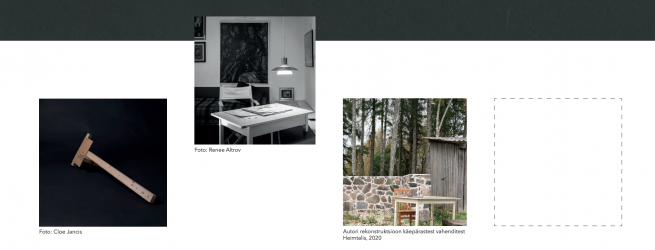
Merilin Tee
Disappearing interior architecture. Vello Asi’s home
Merilin’s master’s thesis examines Estonian interior architect, professor Vello Asi’s legacy through an examination of his home. Starting the process together with professor Asi at the end of 2015, Merilin’s goal was to compile a monograph on the Kõivu tee 12 residential house – to write the story of the house, millimeter by millimeter, together with its author. Unfortunately, Vello Asi departed us in November 2016 and the work was put on pause for several years. The final paper is a case study that tries to open up and discover the interior in its own time and via time, and to help it remain, searching for and finding clues of different influences. Finding an opportunity to capture and make the heritage of Vello Asi accessible to students of interior design and beyond.
Merilin is fascinated by the disappearance and value of interior architecture. What creates value – things, space, people – if and how the value changes when one of these three disappears. What is valuable, how it is created and how it can be preserved, so that it is not lost over time. Time is what increases value on the one hand, but takes the opportunity to keep it on the other.
Supervisors: Gregor Taul, MA; Jüri Kermik, PhD;
Andrea Tamm, MA
//
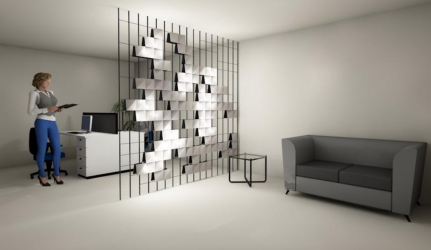
Merlin Kuusemets
Form of light – “Wave” in search of healthier and more natural artificial light indoors
Today’s society spends almost 90% of the day indoors – a home, a school, an office, a mall or some other institution. Even public transport and the car interior are considered indoor. In his article, Dmitry Astonchon also points to a frightening fact that The YouGov report found that almost one in six respondents didn’t spend any time in the fresh air during the day at all. Based on this, it can be assumed that the average working person whose day is spent indoors, steps outside for a mere 15 minutes. Moving people from room to outside would help to improve the situation, but it will not solve the negative factors that affect our health indoors, on a daily basis.
Merlin’s goal is to study light – in addition to the physical
aspect, its effect on human health, especially as regards LED lighting, as these are an ever-increasing trend in indoor lighting. One of the focuses of the master’s thesis is to find a connection between space and the body and to offer a solution in which way this connection can be applied in design.
Supervisors: Andrea Tamm, MA; Gregor Taul, MA; Jüri Kermik, PhD
